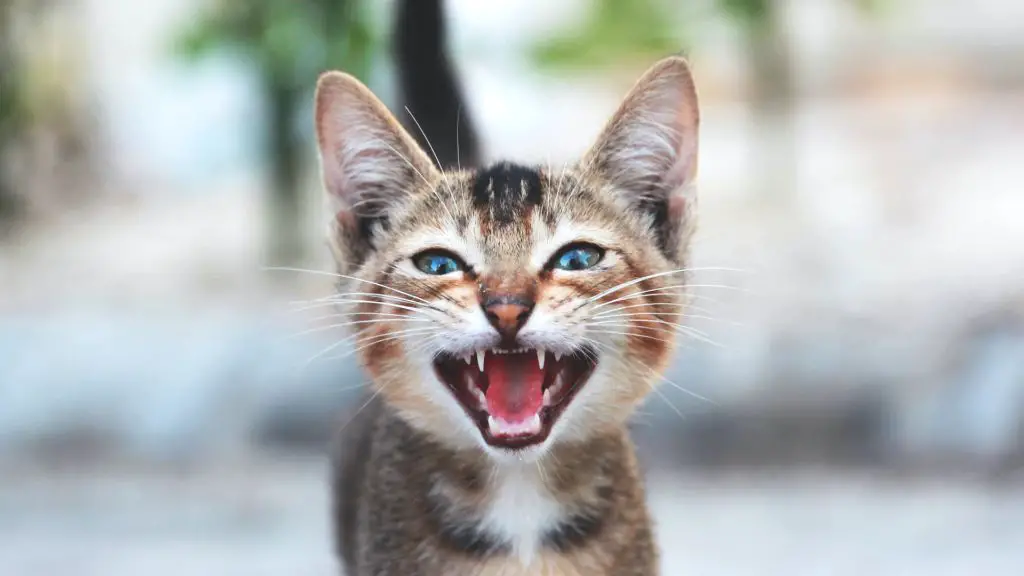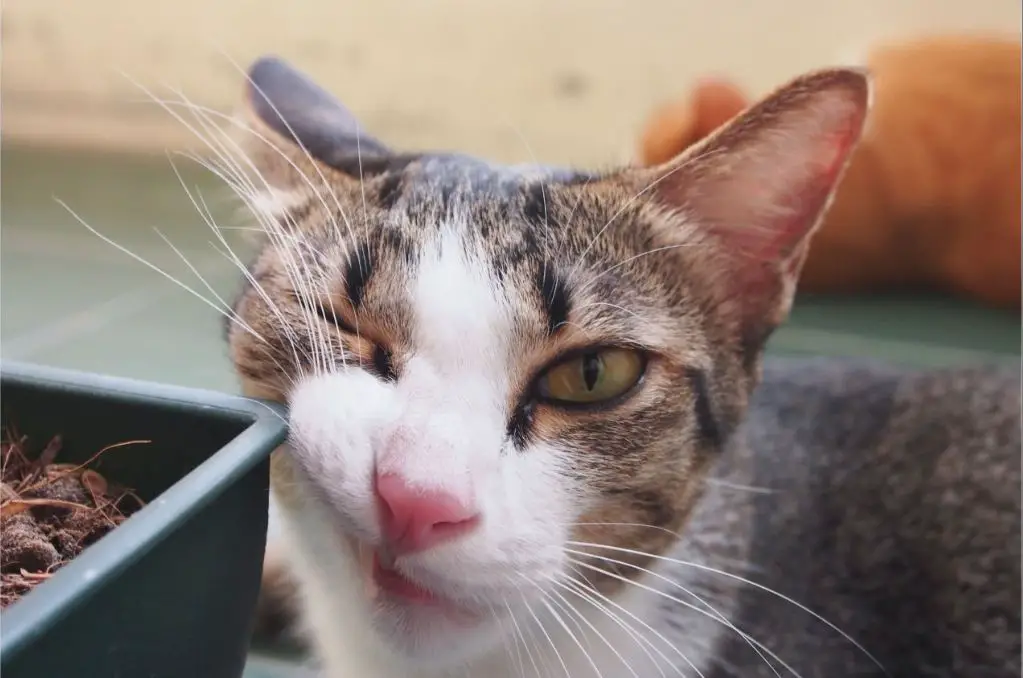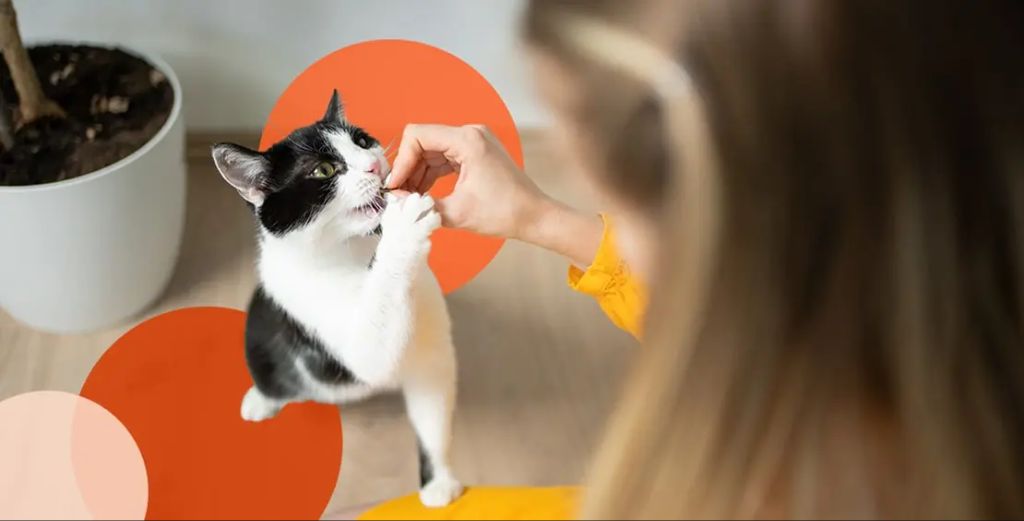Cats communicate with each other and with humans through a variety of methods including vocalizations, body language, scent marking, touch, and visual signals. Understanding how cats communicate is important for pet owners and veterinarians to properly interpret their needs and desires. This allows humans to build strong bonds with cats and help them live happy, enriched lives.
Cats primarily communicate using non-verbal cues like body postures, ear and tail positions, facial expressions, and chemical signals. Vocalizations like meowing, purring, chirping, and growling complement this non-verbal communication. Cats also rely heavily on scent marking with glands on their face, paws, and tails to indicate territory and exchange information. Properly reading this feline “language” enables deeper relationships between cats and their human and feline companions.
Sources:
Decoding the European Shorthair Personality: A Cat Lover’s Guide
Vocalizations

Cats have a wide range of vocalizations that they use to communicate with each other. Some of the main vocalizations include:
Meowing
Meowing is one of the most common cat vocalizations. While meowing is often directed at humans to get attention or food, cats also meow at each other. Mother cats meow at their kittens to get their attention, guide them somewhere, or to warn them of danger. Cats may also meow when meeting other cats to greet them or signal they are not a threat.
Purring
Purring indicates a cat is content and relaxed. Cats purr when being petted and also purr in social situations when greeting other cats. Kittens purr when nursing and adult cats may purr to comfort or soothe kittens. Purring seems to be a friendly vocalization cats direct at each other.
Hissing
Hissing is an aggressive or defensive vocalization. Cats hiss when they feel threatened, angry, or fearful. It is meant to warn the other cat away and signal the cat is ready to fight. Hissing, along with growling, are good indications a cat feels antagonized by another cat.
Growling
Growling is another aggressive vocalization cats make when angry, defensive or threatened. Like hissing, growling serves as a warning to back off. Cats may growl at other cats encroaching on their territory or food. If cats are fighting, expect to hear aggressive growling and hissing.
Body Language
Cats use body language as a primary form of communication. Subtle movements of the tail, ears, eyes, whiskers, and overall body posture relay how a cat is feeling. Understanding feline body language allows humans to better interpret their cat’s mood and needs.

A cat’s tail conveys a variety of messages. An upright, stiff tail signals alertness or arousal. A tail moving rhythmically back and forth shows contentment. A puffed tail indicates aggression or fear, while twitching or thrashing shows irritation. A tucked tail demonstrates a cat feels nervous or submissive. (Spca Nevada, n.d.)
Ear positions also communicate a cat’s disposition. Ears facing forward demonstrate curiosity, interest, and alertness to surroundings. Flattened ears back against the head exhibit an anxious, angry, or fearful cat. Ears swiveling independently signal a cat is attentively tracking prey or toys. (Purina, 2022)
Dilated pupils indicate excitement or aggression, while constricted pupils show relaxation. Blinking eyes slowly communicates contentment and trust. Wide, staring eyes accompany fear or defensiveness. (Purina, 2022)
Whiskers sensing objects help cats navigate environments. Forward-facing, stiff whiskers show attentiveness. Whiskers pushed back demonstrate discomfort with surroundings. Relaxed whiskers accompany purring as signs of happiness.
Scent Marking
Cats use scent marking to communicate ownership and territory. They have scent glands located in various areas of their body that they use to mark objects, other cats, and humans. Some ways cats scent mark include:

Rubbing – Cats have scent glands on their cheeks, lips, chin, tail, and paws. When a cat rubs up against you, furniture, or other objects, it is leaving its scent behind. This is a way for the cat to claim something as its own and feel secure in its environment.
Scratching – Cats scratch objects like furniture or trees to mark them with their scent from glands between their paw pads. The scents communicate information about the cat to other cats in the area.
Spraying Urine – An unneutered male cat will spray strong smelling urine on vertical surfaces like walls to mark its territory and attract females. Spraying is a communication method between cats.
For more information see: How cats use scent to communicate with you and with each other
Touch
Cats communicate through touch in various ways. Two common forms of tactile communication are head butting and face rubbing.[1] When a cat gently bumps its head against a human or another cat, this is called head butting. It’s a friendly gesture that shows affection. Cats will often head butt their owners as a greeting when they return home. Head butting between cats can be a sign of companionship and bonding.
Face rubbing is another affectionate touch-based interaction. A cat will rub its cheeks, chin, and sides of its mouth against people or objects as a way to deposit scent glands in that area. This “scent marking” lets other cats know that this person or object belongs to that cat. Face rubbing can also be a sign of affection and trust between a cat and its owner. The cat is leaving its scent on the human as a sign of connection.
In general, when cats touch each other in a gentle, deliberate way through head butting, face rubbing, and allorubbing, it signifies friendship, care, and affection.
Visual Signals
Cats rely heavily on visual cues and body language to communicate with each other. Some of the key visual signals cats use include:
Slow blinking: Also called “cat kisses,” slow blinking is a sign of affection and trust. A cat slowly blinking at another cat or human means they feel calm and comfortable. It’s a passive way to say “I love you.” Source
Play bows: When a cat bows down with their front legs extended and rear end up in the air, it’s an invitation to play. The play bow puts them in an optimal pouncing position while also conveying a non-threatening message. Source
“Puppy dog eyes”: Cats widen their eyes to make themselves look innocent and appealing. This expression, along with meows and purrs, is often used to solicit food from owners. Source
Aggressive Signals
Cats use body language and vocalizations to indicate aggression or respond to perceived threats. Some common signs of aggression include:
Swatting or biting – A cat may react to overstimulation or perceived threat by swatting with its paw or biting. This is often accompanied by a hissing vocalization. Swatting is meant to startle, while biting is a more intense aggressive behavior (PetMD).
Arched back – When a cat feels threatened, it may arch its back to appear larger and more intimidating to the perceived threat. The fur may also stand on end. This defensive body language signals the cat is feeling hostile (Cole & Marmalade).
Aggressive signals indicate the cat feels provoked, frightened, or insecure. Identifying triggers like overcrowding, pain, or stress can help address the root cause of feline aggression.
Mother-Kitten Communication
Mother cats have several ways of communicating with their kittens through vocalizations, scent, and purring.
Mother cats frequently meow or chirp to their kittens as a way to communicate with them. They will meow every time they enter the kitten nest as a way to let them know she is present. The kittens will respond with their own meows and purrs to greet their mother.
In addition to meowing, mother cats communicate through scent. Mother cats scent mark their kittens by rubbing their heads against them. This transfers their scent onto the kittens, marking them as hers. The kittens learn her scent from an early age.
Purring is another important communication method. Mother cats often purr loudly while nursing and grooming their kittens. This soothes the kittens and lets them know all is well.
Human-Cat Communication
Cats and humans have coexisted for thousands of years, so it’s no surprise we’ve learned to communicate with each other. Humans can interpret cat signals and use various training techniques to enhance communication. Play is also an important way for cats and humans to bond.

Cats communicate their moods through vocalizations, body language, and behaviors. For example, a cat slowly blinking at a human is a sign of affection and trust. Understanding these signals allows humans to better meet the cat’s needs. Humans can also use rewards like treats to reinforce desired behaviors in cats through positive reinforcement training.
Interactive play stimulates cats mentally and physically while strengthening the human-cat bond. Wand toys and laser pointers that trigger a cat’s prey drive are excellent for playtime. It’s important to let the cat “catch” the toy at the end of play sessions to prevent frustration.
With patience and effort, humans can learn to understand cat communication signals. Positive reinforcement training and play help enrich the relationship between cats and their human companions. Clear communication leads to stronger bonds and better care for our feline friends.
Conclusion
In summary, cats communicate in a variety of complex ways. Their vocalizations, body language, scent marking, touch, and visual signals all convey specific messages to other cats and humans. Understanding feline communication patterns allows us to better interpret a cat’s needs and desires.
Appreciating the nuances of how cats communicate is crucial for any cat owner or lover. It enables us to properly understand our feline companions, enrich our relationships with them, and improve their wellbeing. Though cats may sometimes seem mysterious, taking the time to comprehend their communication methods allows us to form deeper bonds and meet their needs. Our lives, and the lives of cats, are enhanced when we make the effort to understand how they express themselves.

